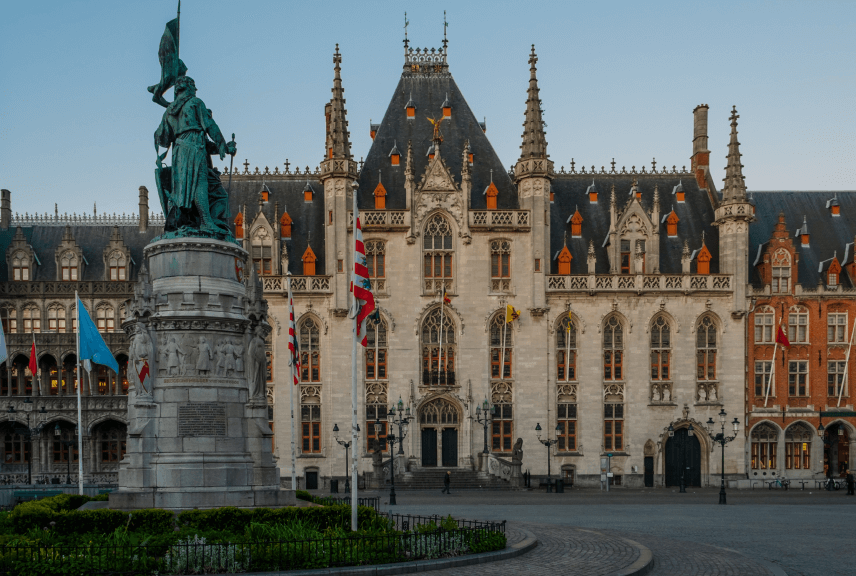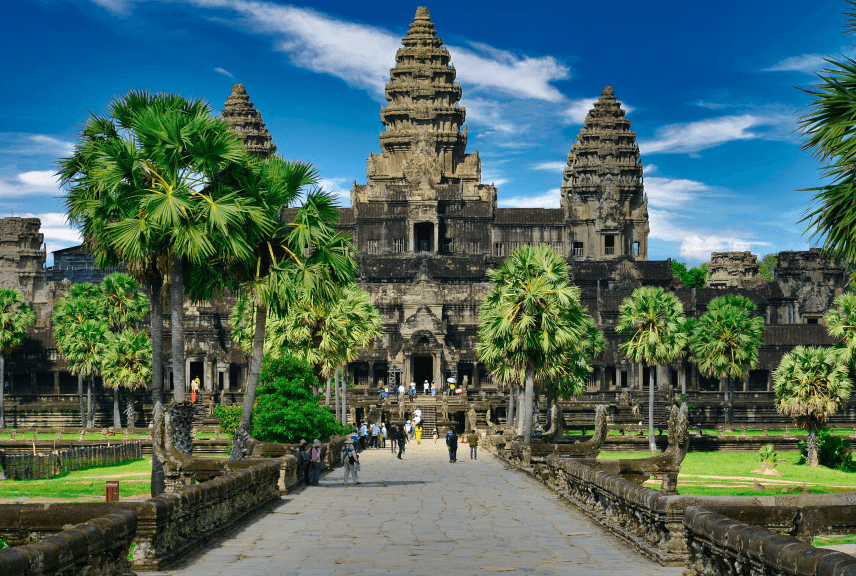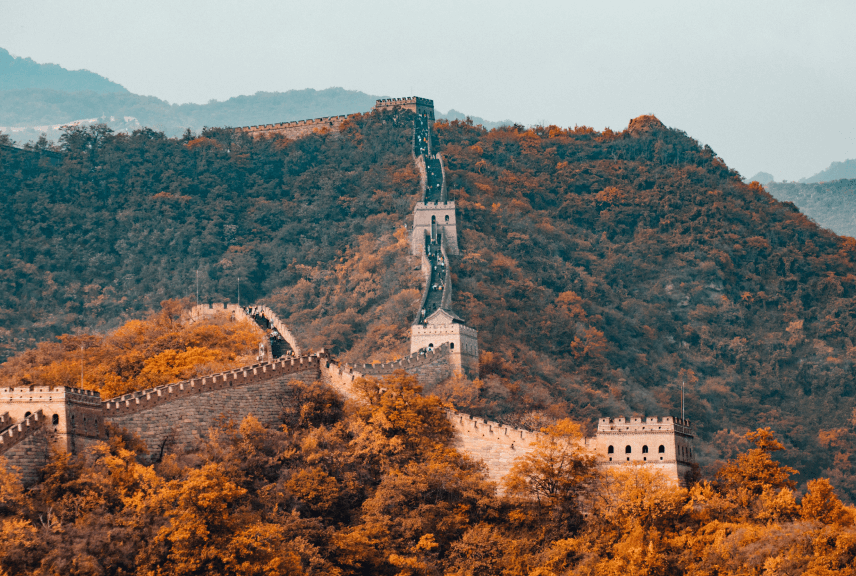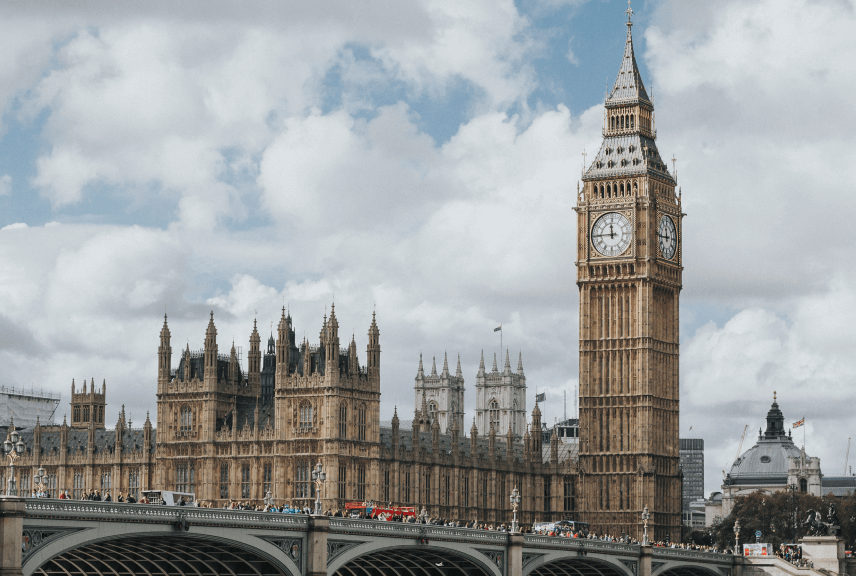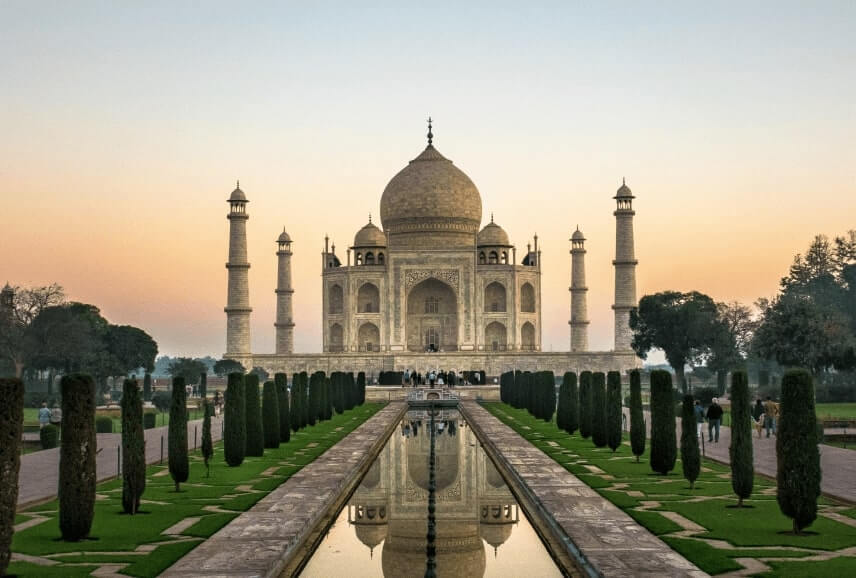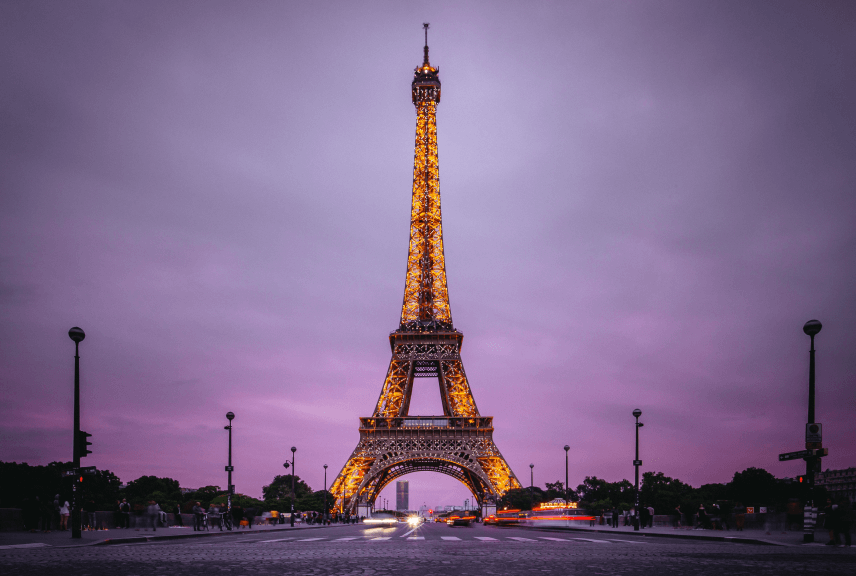Thursday, December 12, 2024
Indonesia’s tourism sector witnessed remarkable growth in October 2024, with Bali, Jakarta, Surabaya, Yogyakarta, Medan, Batam, Makassar, Bandung, Palembang, and Denpasar leading the charge. These 10 iconic cities have played a vital role in driving Indonesia’s appeal as a world-class tourist destination.
As of October 2024, Indonesia’s tourism sector has shown significant growth, with 1,193,867 foreign tourists visiting the country, marking a 22.01% increase compared to October 2023. This surge contributes to a cumulative total of 11.56 million foreign tourist arrivals from January to October 2024.
October’s surge in tourist arrivals, bolstered by new flight routes and rising hotel occupancy rates, reflects the growing global interest in Indonesia’s diverse travel offerings. From scenic beaches and ancient temples to modern cityscapes and cultural hubs, each city offers a unique blend of experiences. This resurgence in tourism is fueling economic growth, supporting local communities, and further strengthening Indonesia’s position as a leading destination in Southeast Asia.
Visa-Free Access Boosts Indonesia’s Tourism Surge in October 2024
As of December 2024, Indonesia’s visa-free policy now allows citizens from 96 countries to enter the country without a visa, significantly enhancing its appeal as a global tourist destination. This list includes key tourism source markets such as France, Germany, Australia, Japan, the United States, and Singapore, as well as other major nations from Europe, Asia, Africa, and the Americas. The visa-free policy has played a crucial role in boosting tourist arrivals across Indonesia’s top 10 tourism hubs, including Bali, Jakarta, Surabaya, Yogyakarta, Medan, Batam, Makassar, Bandung, Palembang, and Denpasar. By simplifying entry procedures, Indonesia has reduced barriers for international travelers, encouraging longer stays, increased spending, and multi-destination travel itineraries. The inclusion of countries like Malaysia, South Korea, Japan, and Singapore has further fueled short-haul tourism, especially for weekend getaways and business trips.
This visa-free policy has had a direct impact on Indonesia’s tourism economy, driving higher hotel occupancy rates in key cities. In Bali, the star hotel occupancy rate rose to 64.37%, while Jakarta saw its rate climb to 59.78%, reflecting the growing demand for both leisure and business tourism. The policy has also supported the rise of MICE (Meetings, Incentives, Conferences, and Exhibitions) tourism, particularly in cities like Jakarta and Bali, which are renowned for hosting large-scale international events. Tourists from visa-exempt countries, including India, China, Saudi Arabia, and South Africa, have been instrumental in filling hotel rooms and supporting local economies. With improved flight routes, visa-free entry, and stronger tourism campaigns, Indonesia’s position as a premier Southeast Asian tourist destination has been solidified, paving the way for sustained growth in the coming years.
Bali: Indonesia’s Crown Jewel of Tourism

Tourist Arrivals: Bali remains the primary gateway for international visitors, with 554,892 arrivals through Ngurah Rai Airport in October 2024. These arrivals marked a significant increase in tourist numbers, especially from key markets like Australia, Malaysia, and Singapore. The island’s pristine beaches, vibrant culture, and world-class hospitality continue to attract a diverse range of visitors. Bali’s strategic position and direct flight connectivity have also played a crucial role in driving international arrivals to the region. Additionally, the island’s reputation as a global tourist hotspot with luxury resorts and scenic landscapes makes it a magnet for visitors seeking relaxation, adventure, and cultural immersion.
Hotel Occupancy Rate (ROR): Bali’s hotel occupancy rate for star hotels reached 64.37%, one of the highest in the country. This impressive figure reflects Bali’s ability to cater to the influx of tourists with premium hospitality services. The ROR for non-star hotels in Bali was 43.94%, which is also a leading figure compared to other regions. The surge in demand for both luxury and budget accommodations underscores Bali’s broad appeal to a wide range of travelers. Additionally, Bali’s extensive range of accommodation options, from five-star resorts to affordable homestays, makes it accessible to travelers with varying budgets and preferences.
Bali: Indonesia’s Tropical Paradise
- Why Visit? Bali is Indonesia’s most famous island destination, known for its pristine beaches, world-class surf spots, lush rice terraces, and vibrant culture. It is a haven for honeymooners, adventurers, and spiritual seekers alike.
- Top Attractions:
- Uluwatu Temple: Perched on a cliff, offering stunning sunset views.
- Tegallalang Rice Terraces: Iconic landscapes perfect for photos and nature walks.
- Seminyak and Kuta Beaches: Great for surfing, sunbathing, and nightlife.
- Ubud: The cultural heart of Bali with art markets, dance shows, and wellness retreats.
- Local Food: Nasi Campur, Babi Guling (suckling pig), and Lawar (spiced meat salad).
- Best Time to Visit: April to October for the dry season and ideal beach weather.
Jakarta: A Gateway to Indonesia

Tourist Arrivals: Jakarta’s Soekarno-Hatta Airport welcomed 218,170 international visitors in October 2024. The city’s role as a key international transit hub continues to support the steady influx of tourists. Outbound trips from this airport accounted for 390,343 trips, making it Indonesia’s busiest hub for outbound tourism. Jakarta’s appeal lies in its blend of modern cityscapes, shopping destinations, and historical sites, which make it a prime destination for both leisure and business travelers. The city’s development as a leading MICE (Meetings, Incentives, Conferences, and Exhibitions) destination has further enhanced its ability to attract international visitors.
Hotel Occupancy Rate (ROR): Jakarta’s star hotel ROR increased to 59.78%, reflecting a steady rise in overnight stays. Non-star hotels achieved a ROR of 43.13%, highlighting the consistent demand for affordable accommodation. The city’s role as a major business and travel hub drives both inbound and outbound tourism, with corporate events, business meetings, and leisure travel contributing to its robust hotel occupancy. The steady increase in occupancy rates reflects Jakarta’s growing role in Indonesia’s business tourism sector, with conferences, exhibitions, and trade fairs driving the demand for hotel accommodations.
Jakarta: Indonesia’s Bustling Capital
- Why Visit? Jakarta is the capital of Indonesia and the country’s largest city. It’s a vibrant mix of modern skyscrapers, shopping malls, and historical landmarks.
- Top Attractions:
- National Monument (Monas): Iconic landmark representing Indonesia’s independence.
- Kota Tua (Old Town Jakarta): Historic district with colonial buildings and museums.
- Ancol Dreamland: Waterfront entertainment area with amusement parks and beaches.
- Grand Indonesia Mall: One of the largest shopping malls in Southeast Asia.
- Local Food: Soto Betawi (beef soup), Nasi Uduk (coconut rice), and Kerak Telor (crispy egg dish).
- Best Time to Visit: May to October to avoid the monsoon season.
Surabaya: A Rising Star in East Java

Tourist Arrivals: Juanda Airport in Surabaya recorded 28,182 arrivals in October 2024. This growth underscores Surabaya’s growing importance as a key tourism hub in East Java. The city’s strategic location and accessibility through Juanda Airport make it an attractive destination for both business and leisure travelers. Outbound trips from the same airport reached 52,177, reflecting the city’s expanding role as a major outbound travel point for East Java residents. Surabaya’s rich history, culinary delights, and proximity to key tourist sites like Mount Bromo further boost its status as a preferred destination.
Hotel Occupancy Rate (ROR): Surabaya’s star hotel occupancy rate stood at 58.07%, up from 56.42% in September 2024, demonstrating steady growth. The city’s increased focus on promoting MICE (Meetings, Incentives, Conferences, and Exhibitions) tourism has boosted hotel demand. The rise is further supported by Surabaya’s position as a commercial hub and gateway to iconic tourist destinations like Mount Bromo and Ijen Crater. Additionally, the city’s vibrant culinary scene and shopping centers are major draws for tourists, which in turn increases demand for overnight stays at both budget and premium accommodations.
Surabaya: East Java’s Hidden Gem
- Why Visit? As Indonesia’s second-largest city, Surabaya blends history with modernity. It’s a gateway to Mount Bromo and a growing business hub.
- Top Attractions:
- House of Sampoerna: A historic cigarette factory and museum.
- Submarine Monument (Monkasel): A preserved Russian submarine-turned-museum.
- Suramadu Bridge: Indonesia’s longest bridge, connecting Surabaya to Madura Island.
- Kenjeran Beach: A coastal retreat for families and photographers.
- Local Food: Rujak Cingur (spicy fruit salad), Rawon (black beef soup), and Lontong Balap (rice cake with tofu and bean sprouts).
- Best Time to Visit: May to October for dry weather and clear views of Mount Bromo.
Yogyakarta: The Cultural Heart of Indonesia

Tourist Arrivals: Yogyakarta International Airport welcomed 7,828 international arrivals in October 2024. This increase highlights the city’s enduring appeal as a center for cultural tourism. Tourists are drawn to Yogyakarta’s historic temples, including Borobudur and Prambanan, and its vibrant local arts scene. Yogyakarta’s role as an education and cultural center further strengthens its position as a top tourist destination in Indonesia. Tourists seeking a deeper understanding of Javanese traditions and history find Yogyakarta’s offerings unmatched, driving a steady influx of international and domestic visitors.
Hotel Occupancy Rate (ROR): The ROR for star hotels in Yogyakarta reached 55.90%, up from 51.35% in September. Non-star hotel occupancy remained strong at 36.66%, demonstrating the city’s growing popularity among travelers seeking budget-friendly stays. This rise in hotel stays is linked to an increase in domestic and international cultural tourism, with visitors keen to explore Yogyakarta’s iconic landmarks. The availability of diverse accommodation options, from boutique hotels to affordable homestays, caters to the needs of all traveler segments, ensuring sustained growth in the hotel occupancy rate.
Yogyakarta: The Cultural Heart of Indonesia
- Why Visit? Known for its traditional Javanese art, culture, and proximity to ancient temples like Borobudur and Prambanan, Yogyakarta is a must-visit for history and culture lovers.
- Top Attractions:
- Borobudur Temple: The largest Buddhist temple in the world.
- Prambanan Temple: A stunning Hindu temple complex.
- Malioboro Street: The city’s shopping and street food hotspot.
- Taman Sari (Water Castle): A former royal garden and bathing complex.
- Local Food: Gudeg (jackfruit stew), Bakpia (sweet pastry), and Nasi Kucing (mini rice meal).
- Best Time to Visit: May to October for dry weather and clear temple visits.
Palembang: Gateway to South Sumatra

Tourist Arrivals: Palembang’s Sultan Mahmud Badaruddin II Airport facilitated a significant volume of international and domestic tourist arrivals in October 2024. With its role as a major trade and cultural hub, Palembang saw a steady rise in arrivals from neighboring Southeast Asian countries. The city’s position as a historical and culinary tourism hub has made it a focal point for regional tourism growth. Palembang’s prominence is further supported by its hosting of international sports events, drawing large crowds from across the region.
Hotel Occupancy Rate (ROR): Palembang’s star hotel ROR reached 57.12%, highlighting the growing demand for accommodation. Non-star hotel occupancy also rose steadily as travelers sought budget-friendly stays. This increase is attributed to Palembang’s role in sports tourism, business travel, and culinary tourism, especially following the success of recent international sporting events hosted in the city. As a result, demand for accommodations in both premium and budget hotel categories has surged, strengthening the city’s hotel occupancy rate.
Medan: Gateway to Sumatra’s Natural Wonders
- Why Visit? Medan is a culinary hub and a gateway to North Sumatra’s most famous attraction, Lake Toba.
- Top Attractions:
- Lake Toba: The largest volcanic lake in Southeast Asia, perfect for relaxation.
- Tjong A Fie Mansion: A historic home that blends Chinese, Malay, and Dutch influences.
- Maimoon Palace: A former royal palace that reflects Islamic and Malay design.
- Great Mosque of Medan: One of Indonesia’s most beautiful mosques.
- Local Food: Mie Gomak (Batak-style noodles), Arsik (spiced fish), and Bika Ambon (sweet cake).
- Best Time to Visit: May to September for clear skies and smooth travel to Lake Toba.
Medan: The Northern Gateway to Sumatra

Tourist Arrivals: Medan’s Kualanamu Airport recorded 20,129 international arrivals in October 2024. As the primary entry point for tourists visiting North Sumatra, Medan serves as a gateway to iconic destinations such as Lake Toba. Tourists are drawn to Medan’s unique culinary scene and its proximity to natural wonders. Additionally, Medan’s strong connectivity with Southeast Asian nations like Malaysia and Singapore facilitates seamless access for regional visitors, driving growth in international arrivals.
Hotel Occupancy Rate (ROR): Medan’s star hotel occupancy rate stood at 46.23%, reflecting an increase in demand for high-end accommodations. Non-star hotels reported a ROR of 20.52%, signaling steady demand from budget-conscious travelers. The city’s growing status as a tourist and business hub has prompted an increase in business travel, leisure visits, and event-related stays, driving up occupancy rates in both star and non-star hotels.
Batam: Indonesia’s Gateway to Singapore
- Why Visit? Batam is a key entry point from Singapore, known for its duty-free shopping, waterfront resorts, and seafood dining.
- Top Attractions:
- Barelang Bridge: A series of iconic bridges connecting Batam to nearby islands.
- Batam Centre Ferry Terminal: Main entry point for visitors from Singapore.
- Mega Mall Batam Centre: A major shopping center close to the ferry terminal.
- Waterfront City: A hub for water sports and seaside relaxation.
- Local Food: Seafood, especially fresh crab, prawns, and fish dishes.
- Best Time to Visit: March to October for dry weather and beach activities.
Batam: A Maritime Gateway to Indonesia

Tourist Arrivals: Batam’s Hang Nadim Airport recorded 813 arrivals in October 2024, while Batam Port facilitated the arrival of 109,864 tourists. Its proximity to Singapore makes Batam a favored destination for weekend getaways and short-term stays. Shopping, entertainment, and wellness tourism are popular draws for visitors from Singapore and Malaysia, further enhancing tourist numbers in Batam. Its role as a free-trade zone also attracts business travelers, boosting arrival figures.
Hotel Occupancy Rate (ROR): Batam’s star hotel ROR reached 55.66%, reflecting a growing interest in upscale accommodations among visitors. Non-star hotels maintained stable occupancy, driven by the influx of short-term leisure travelers. The steady influx of tourists for weekend leisure trips from Singapore sustains high demand for budget and luxury accommodations, enabling Batam’s hotel industry to thrive.
Makassar: Gateway to Eastern Indonesia
- Why Visit? A key transport hub for Eastern Indonesia, Makassar is the starting point for trips to Tana Toraja.
- Top Attractions:
- Losari Beach: Famous for its picturesque sunset views.
- Fort Rotterdam: A historical landmark from the Dutch colonial era.
- Tana Toraja: Not in Makassar, but a must-visit cultural experience from this city.
- Trans Studio Makassar: A large indoor amusement park.
- Local Food: Coto Makassar (beef soup), Konro (beef ribs), and Pisang Epe (grilled banana).
- Best Time to Visit: May to September for pleasant weather and smooth travel to Tana Toraja.
Makassar: A Key Entry Point to Eastern Indonesia

Tourist Arrivals: Makassar’s Hasanuddin Airport registered 1,091 tourist arrivals in October 2024. The city’s status as a key gateway to Eastern Indonesia makes it an important transit point for travelers heading to destinations such as Tana Toraja. Makassar’s tourism appeal lies in its natural beauty, cultural heritage, and culinary experiences, drawing in tourists seeking authentic local experiences.
Hotel Occupancy Rate (ROR): Makassar’s star hotel ROR reached 53.19%, supported by growing interest in cultural and natural tourism in South Sulawesi. Non-star hotels also reported steady demand, especially from domestic travelers and backpackers. The rise in occupancy rates is linked to increased tourism campaigns and improved transport links, making Makassar a growing hotspot for leisure tourism and transit stays.
Bandung: A Cool Getaway from Jakarta
- Why Visit? Known for its cool climate, lush tea plantations, and outlet shopping, Bandung is a favorite weekend retreat for Jakarta’s residents.
- Top Attractions:
- Tangkuban Perahu: A scenic volcano with crater walks.
- Kawah Putih: A stunning sulfur lake with a surreal white-green hue.
- Lembang Floating Market: A floating food and craft market.
- Cihampelas Walk: A popular shopping district for fashion and souvenirs.
- Local Food: Batagor (fried fish balls), Sate Maranggi (beef satay), and Nasi Timbel (banana leaf-wrapped rice).
- Best Time to Visit: May to September for the dry season and clear mountain views.
Bandung: West Java’s Scenic Retreat

Tourist Arrivals: While Husein Sastranegara Airport’s direct international arrivals remain modest, Bandung’s tourism draw remains strong due to its proximity to Jakarta. Domestic tourists flock to Bandung for its cool climate, scenic landscapes, and shopping experiences. Bandung’s position as a popular weekend getaway has fueled a steady rise in visitor numbers, especially from Jakarta’s urban population.
Hotel Occupancy Rate (ROR): Bandung’s star hotel ROR was 53.85%, reflecting growing demand from leisure travelers and family groups. The city’s extensive shopping outlets, culinary experiences, and natural attractions contribute to strong demand for overnight stays. Non-star hotels cater to budget-conscious tourists, maintaining a healthy occupancy rate. With Bandung’s scenic appeal and convenient access from Jakarta, hotel occupancy has remained robust year-round.
Palembang: The Culinary Capital of Sumatra
- Why Visit? Known for its rich history and culinary traditions, Palembang is one of Sumatra’s most important cities.
- Top Attractions:
- Ampera Bridge: A landmark bridge that lights up at night.
- Kemaro Island: A unique temple on a small island in the Musi River.
- Al-Qur’an Al-Akbar: The world’s largest wood-carved Quran.
- Benteng Kuto Besak: A 17th-century fort overlooking the Musi River.
- Local Food: Pempek (fish cakes), Tekwan (fish soup), and Laksan (spicy coconut fish dish).
- Best Time to Visit: May to October for dry weather and outdoor activities.
Denpasar: The Heart of Bali’s Tourism Industry

Tourist Arrivals: As Bali’s administrative and cultural center, Denpasar plays a vital role in the island’s tourism ecosystem. Many tourists arriving at Bali’s Ngurah Rai Airport transit through Denpasar en route to other major destinations on the island. The city’s central location, rich culture, and role as a commercial hub further enhance its position as a key entry point for tourists exploring Bali’s renowned beaches, temples, and resorts.
Hotel Occupancy Rate (ROR): Denpasar’s hotel occupancy rate mirrors Bali’s broader trend, with a star hotel ROR of 64.37%. Non-star hotels recorded similar demand, reflecting the growing popularity of budget travel. Denpasar’s central role in Bali’s hospitality sector enables it to cater to various traveler types, from luxury tourists seeking premium villas to backpackers opting for affordable homestays. This diverse accommodation mix strengthens Denpasar’s position in Bali’s tourism industry.
Denpasar: Bali’s Administrative and Cultural Hub
- Why Visit? Denpasar serves as the administrative capital of Bali and a transit hub for travelers visiting other parts of the island.
- Top Attractions:
- Bajra Sandhi Monument: A monument symbolizing Bali’s history and struggles.
- Sanur Beach: A laid-back beach with calm waters.
- Pasar Badung Market: The largest traditional market in Bali.
- Le Mayeur Museum: An art museum dedicated to Belgian painter Adrien-Jean Le Mayeur.
- Local Food: Sate Lilit (fish satay), Lawar (spiced meat salad), and Balinese desserts.
- Best Time to Visit: May to September for Bali’s peak season and dry weather.
October 2024 marked a turning point for Indonesia’s tourism sector, with Bali, Jakarta, Surabaya, Yogyakarta, Medan, Batam, Makassar, Bandung, Palembang, and Denpasar at the heart of this resurgence. The increase in international and domestic tourist arrivals, coupled with higher hotel occupancy rates, underscores the growing demand for Indonesia’s cultural, natural, and urban attractions. Each city played a crucial role — from Bali’s serene beaches to Jakarta’s metropolitan charm and Yogyakarta’s rich heritage. With strategic efforts to enhance flight routes, boost accessibility, and develop tourism infrastructure, these cities are well-positioned for continued growth. As Indonesia welcomes more tourists each month, October’s performance serves as a clear indicator of the country’s bright future in global tourism.
Tags: Bali, Bandung, Batam, Denpasar, indonesia, Jakarta, makassar, Medan, palembang, Surabaya, Tourism news, travel industry, Travel News, Yogyakarta
